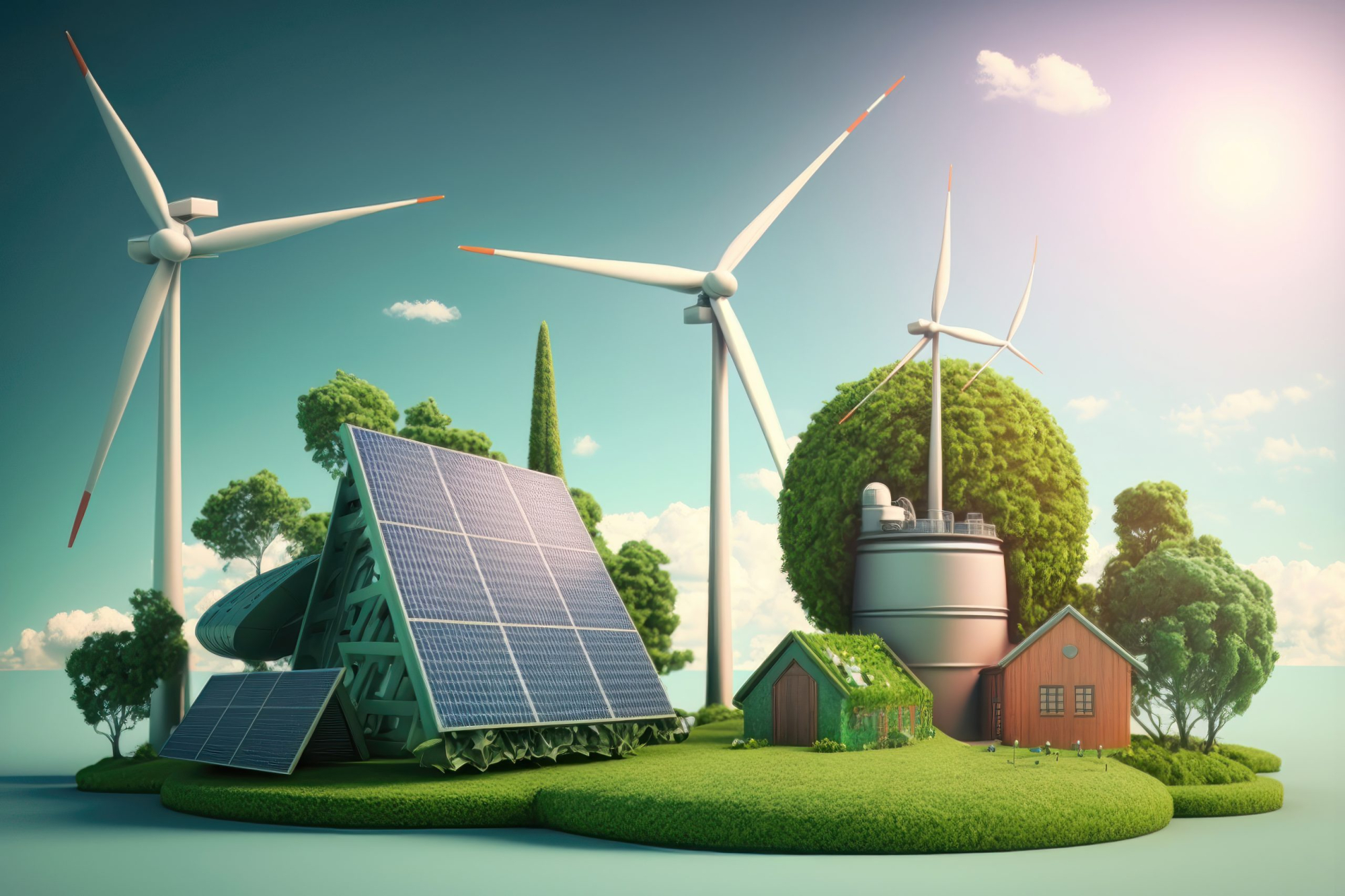1. Introduction to renewable energy

Renewable energy is defined as a naturally renewable energy source, including types such as solar, wind, hydroelectric, biomass and geothermal. These sources are not only abundant but also more environmentally friendly than traditional fossil energy.
In the current context, the importance of renewable energy becomes clearer than ever. Climate change is causing serious impacts on our planet, such as increasing global temperatures and extreme and unusual weather. Environmental pollution is also a big problem, especially in urban areas, affecting public health and the ecosystem. Switching to renewable energy not only helps reduce carbon emissions but also contributes to sustainable development and environmental protection for future generations.
2. Popular types of renewable energy
Solar energy: Solar energy is collected through solar panels, turning sunlight into electricity. This technology is increasingly advanced with many applications in civil, industrial and rooftop solar power systems, helping to save electricity costs and reduce emissions.

Wind energy: Wind energy is mainly converted into electricity through wind turbines. These turbines work on the principle that when the wind blows, it turns the blades, thereby producing electricity. Wind energy is growing rapidly, contributing to reduced emissions and increased sustainability.

Hydroelectric power: Hydroelectric power uses the power of water currents to produce electricity. The system involves building dams and reservoirs to regulate flow, which then generates electricity involving turbines. Hydroelectric energy provides a stable source of electricity and meets large consumer demand.

Biomass energy: Biomass energy involves utilizing organic materials such as plants, animals and waste to produce electricity and fuel. This concept not only helps reduce waste but also contributes to sustainable energy supply.

Geothermal energy: Geothermal energy exploits heat from underground to generate electricity and provide heat. The operating principle is to use steam or hot water from geothermal sources to rotate turbines and generate electricity. Geothermal energy is applied in many industries, helping to reduce dependence on fossil energy.

3. Benefits of renewable energy
Using renewable energy significantly reduces carbon emissions, supporting the fight against climate change. By replacing fossil fuels with clean energy sources such as solar, wind and hydropower, we can protect the ecosystem and improve air quality.
Using renewable energy not only reduces electricity bills but also brings long-term economic benefits. By deploying renewable energy systems, both households and businesses can reduce energy costs in the future, especially when traditional energy prices are increasingly escalating.
The renewable energy industry is creating millions of new jobs, from manufacturing, equipment installation to maintenance and operation. The development of this sector not only improves people’s lives but also boosts the local economy by generating income and sustainable growth.
4. Challenges in Adopting Renewable Energy
One of the major obstacles to the deployment of renewable energy is the initial investment cost. Although the cost of solar and wind technologies is decreasing, the installation and deployment costs can still be quite high. This can sometimes be difficult for households and businesses, especially those on a limited budget.
To get the most out of renewable energy, a suitable infrastructure system is needed. This includes smart grids, energy storage capabilities and many other supporting devices. Developing and maintaining this infrastructure is not only expensive but also requires a lot of time and resources.
Changes in government policies and regulations can have a major impact on the deployment of renewable energy. Frequent adjustments in support policies, subsidies and regulations create uncertainty for investors and businesses in this sector. Therefore, establishing a stable and clear legal framework is essential to promote the development of renewable energy.
5. Solutions and strategies to encourage the use of renewable energy
To encourage the use of renewable energy, the government needs to implement specific support policies such as providing subsidies, tax incentives and financial support for green energy projects. These policies will not only reduce the burden of initial costs but also encourage businesses and households to participate in the energy transition.
Investing in research and development of new technologies is extremely important to improve renewable energy solutions. Governments and organizations need to encourage innovation and cooperation between universities, research institutes and industry. Technological advances will increase efficiency and reduce costs, making renewable energy more attractive to consumers.
An effective way to promote renewable energy is to increase education and public awareness of the benefits of this energy source. Communication programs, seminars and training courses can help people better understand how renewable energy can improve their lives and protect the environment. When communities are more aware of the value of renewable energy, they are more likely to accept and adopt it.
6. Future trends of renewable energy
In the future, renewable energy is on the rise thanks to the emergence of new technologies such as new generation solar panels or high-efficiency wind turbines along with advanced energy storage systems. These technologies not only improve energy harvesting efficiency but also reduce production costs, expanding the potential for renewable energy development in the future.
An important trend today is the integration of renewable energy into the national power system. This will help increase the stability of the grid and reduce dependence on fossil fuels. Connecting renewable energy sources to the grid will create a flexible power system, meeting the growing consumption needs of people and businesses.
Renewable energy will continue to play an important role in promoting sustainable development. By reducing carbon emissions and pollution, renewable energy not only protects the environment but also ensures resources for future generations. In the effort to build a green and sustainable economy, renewable energy will be a key element in the global development strategy.




